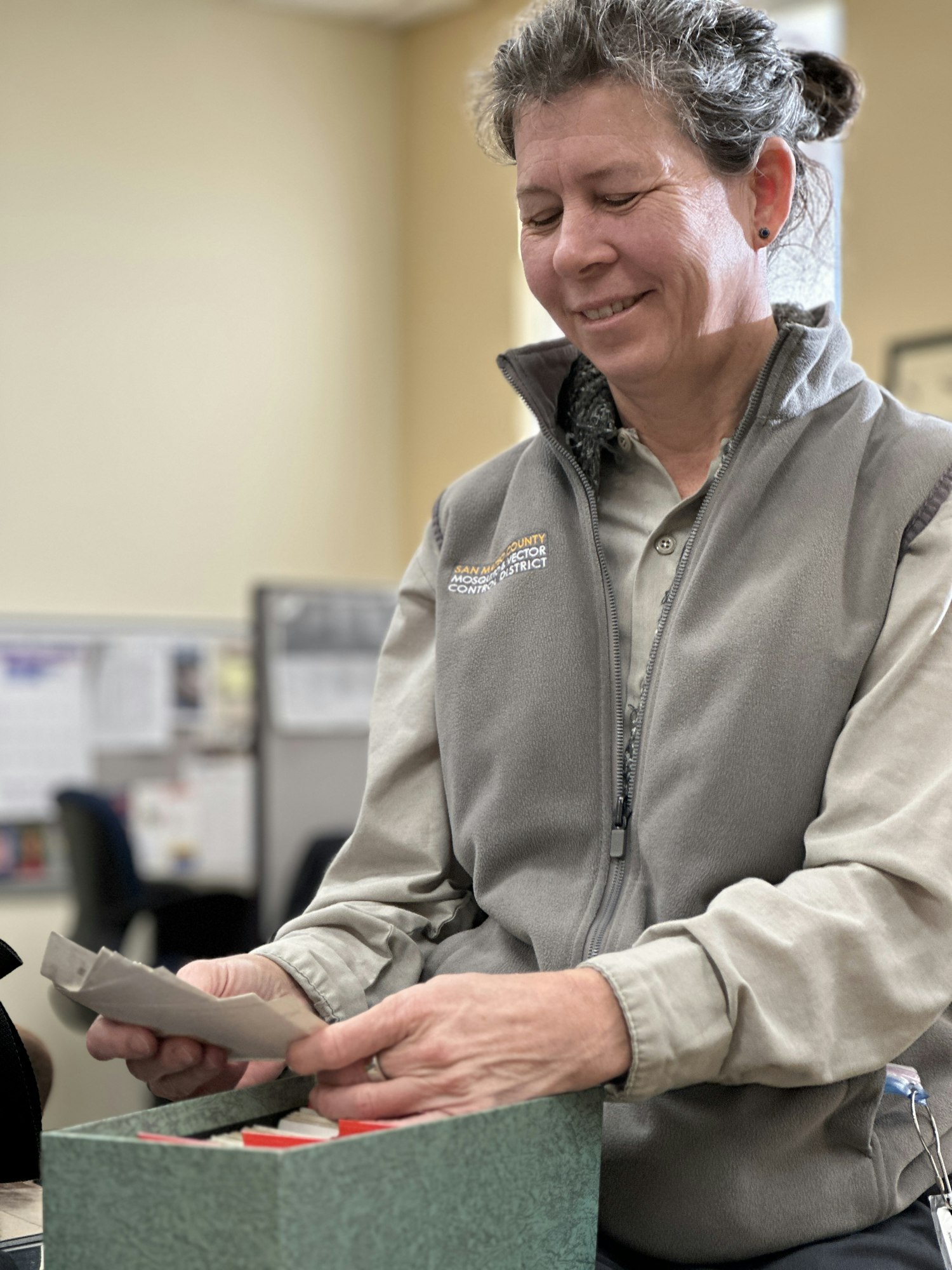Kim Keyser

Kim has worked with the District since 2004. She studied entomology and acarology in university and has worked in that field for Archbold Biological Station in Florida and San Mateo County Department of Agriculture/Weights and Measures in California.
She currently provides services to the residents of Woodside, Portola Valley, and La Honda. In addition to regular mosquito control work, Kim has worked extensively with the San Francisco Estuary Invasive Spartina Project and has completed several studies on yellowjackets and other stinging insects. She has given oral and poster presentations conferences, as well as a continuing education lecture for the Mosquito and Vector Control Association of California.
In her free time, Kim works as a certified naturalist on boats in the San Francisco Bay and out to sea, where she leads whale, shark, and other sea mammal watching groups. She lives in San Mateo, keeps bees, and maintains an organic heirloom garden.
Kim's answers to a few questions about working with the District:
What is your favorite mosquito fact?
Some mosquitoes lay their eggs directly in water, but other species of mosquitoes lay their eggs on substrates, then hatch when it rains and the substrate is submerged in water. This can be a surprise to people, because most people think of standing water only.
What interest/background brought you to this job?

I studied entomology (and linguistics), and I was disheartened by the prospects of a career in entomology when I left school. I had only known about research-related entomology careers, and I did not want to sit and write papers all day. When I moved here, I met a District trustee who told me about the position and convinced me that it would be a good job. That same day, I came to the District on my lunch hour from my previous job, interviewed, and I was hired. I had never heard of or considered mosquito abatement until that person mentioned it. I originally started as a seasonal employee, and I was hired into a full-time position in January of 2005.
What is the most commonly overlooked mosquito source you see in yards?
Kids' toys. People don't usually think about kids' toys as holding enough water to breed mosquitoes. It seem like lots of people forget to check for and dump the water from toys. Even when the water is pretty disgusting!
What is the most surprising place you've found mosquito larvae?
After 20 years, there is more than one surprising place! Trash on the side of the road, like squished cups, Styrofoam boxes, and anything that can hold at least a little bit of water - I've found larvae in many different kinds of trash on the side of roads. I've also found larvae in tree holes that you'd think would be too small to hold much at all. And horse hoof prints! At one location, there were dozens of hoof prints around a watering trough, and each one was holding water and mosquito larvae.
How have things changed over the last 20 years?

When I first started here, everything was written. Service requests from residents were written on little squares of paper, and we would have stacks of them. We had little index cards we put all the treatments on for every house, impound, everything. We wrote with fine little pens and pencils to fit as much as we could on those cards. Then we transitioned to writing things on larger pieces of paper and a different filing system. When I first started, we had the big Thomas Guide AAA maps. We all had stacks of maps. I would lay out the map, and put a dot for every mosquito source to make it easier to see all the sources at once. Eventually, we started a filing/Access database around 2009, entered all the data, and office staff would enter all the new information. We started using a more complex geodatabase in 2015. With the new geodatabase, it was so nice to see everything all laid out on a map, rather than stacks of index cards and my big paper map.
What residents have to say about Kim
Kim was remarkable - knowledgeable, helpful and thorough.San Mateo County resident
